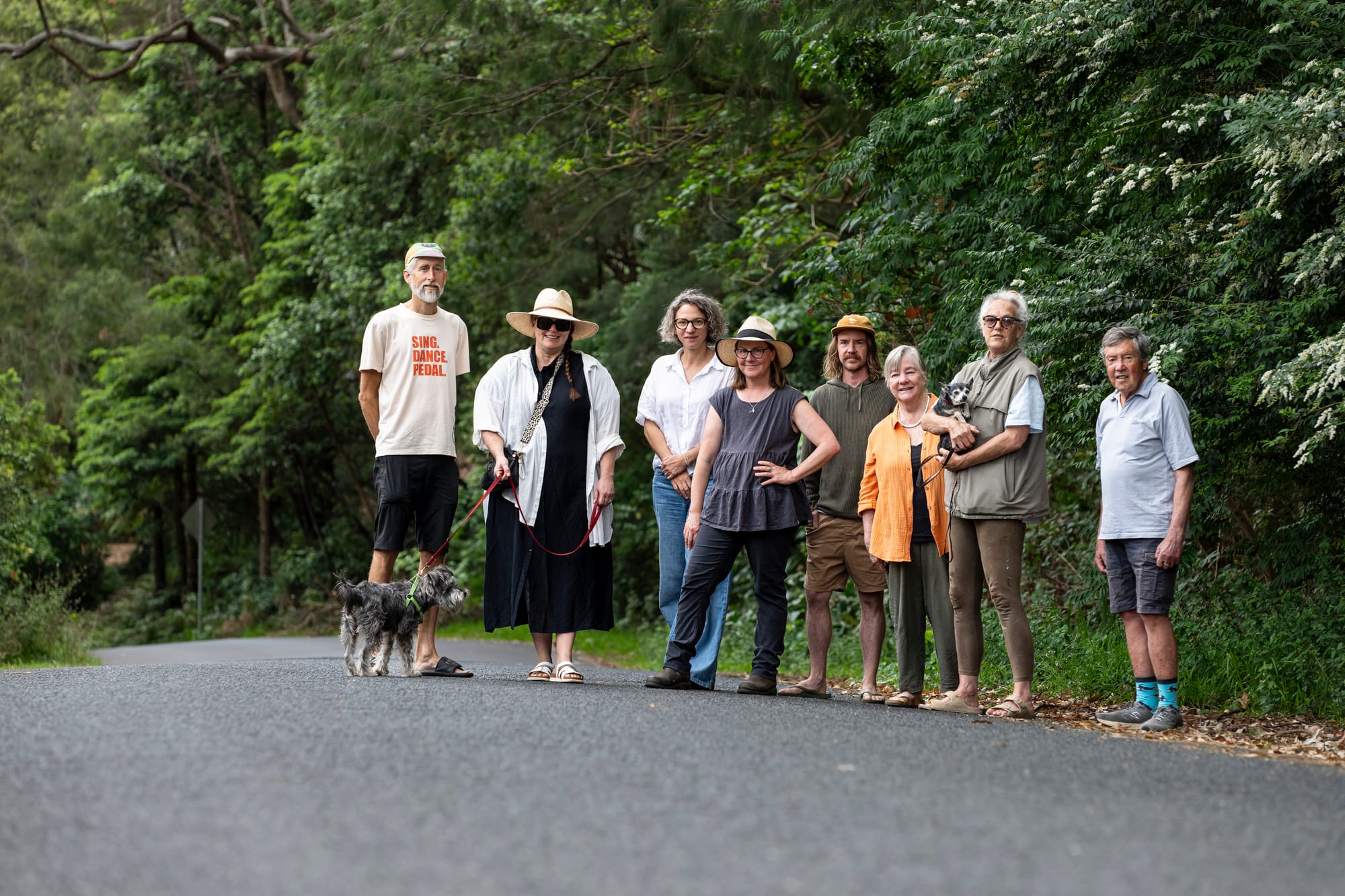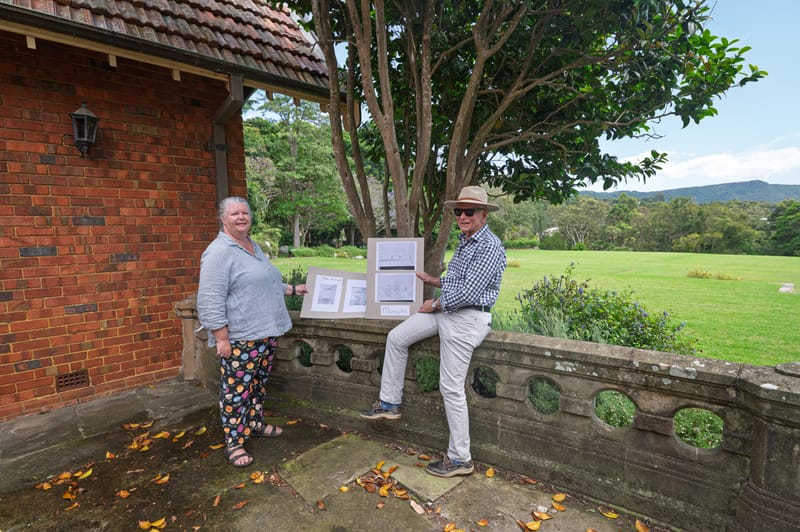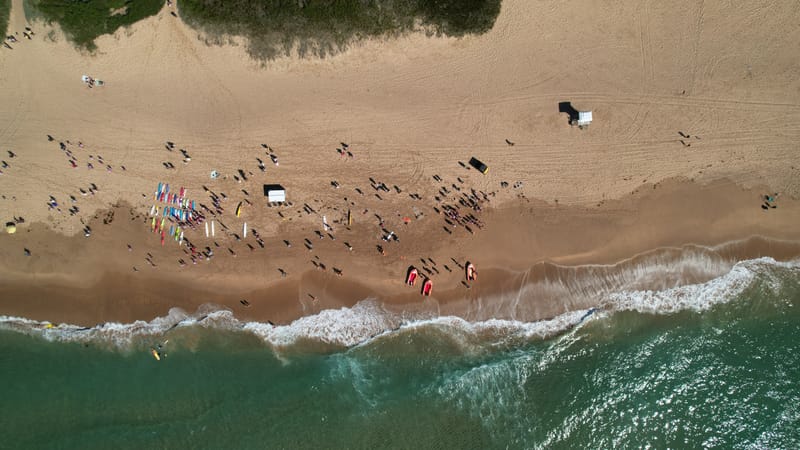Call for traffic calming on ‘river of death’
It has been five years since Frank the Lyrebird was killed in a hit-and-run on Buttenshaw Drive and the tree that local ecologist Kylie Madden planted in his memory is now twice her height. Yet residents are still waiting for Wollongong City Council to take traffic calming steps
It has been five years since Frank the Lyrebird was killed in a hit-and-run on Buttenshaw Drive and the tree that local ecologist Kylie Madden planted in his memory is now twice her height. Yet residents are still waiting for Wollongong City Council to take traffic calming steps.
“The traffic is just getting worse and worse, and council just handball it,” says Kylie, who often sees utes fly by at 80km/h on the back roads through Wombarra, Coledale and Austinmer.
“Every so often, typically when some animal is dead out the front of my house, I get really angry. I’ll have a bit of a flurry of pressure on them, and they say all the right things, they ‘hear you’ and listen – and do nothing.”
This spring, when marsupials are carrying joeys, and lizards and amphibians are bearing eggs, has been particularly traumatic.
“I run along here all the time, every other day, there’s the stench of rotting flesh,” says Ed Birt, the president of the Illawarra Bicycle Users Group (IBUG), who called the Illawarra Flame after seeing council's newly installed speed bumps in Mangerton.
“It’s now 40km/h all through there. So they can do it. They can slow people down,” he says.
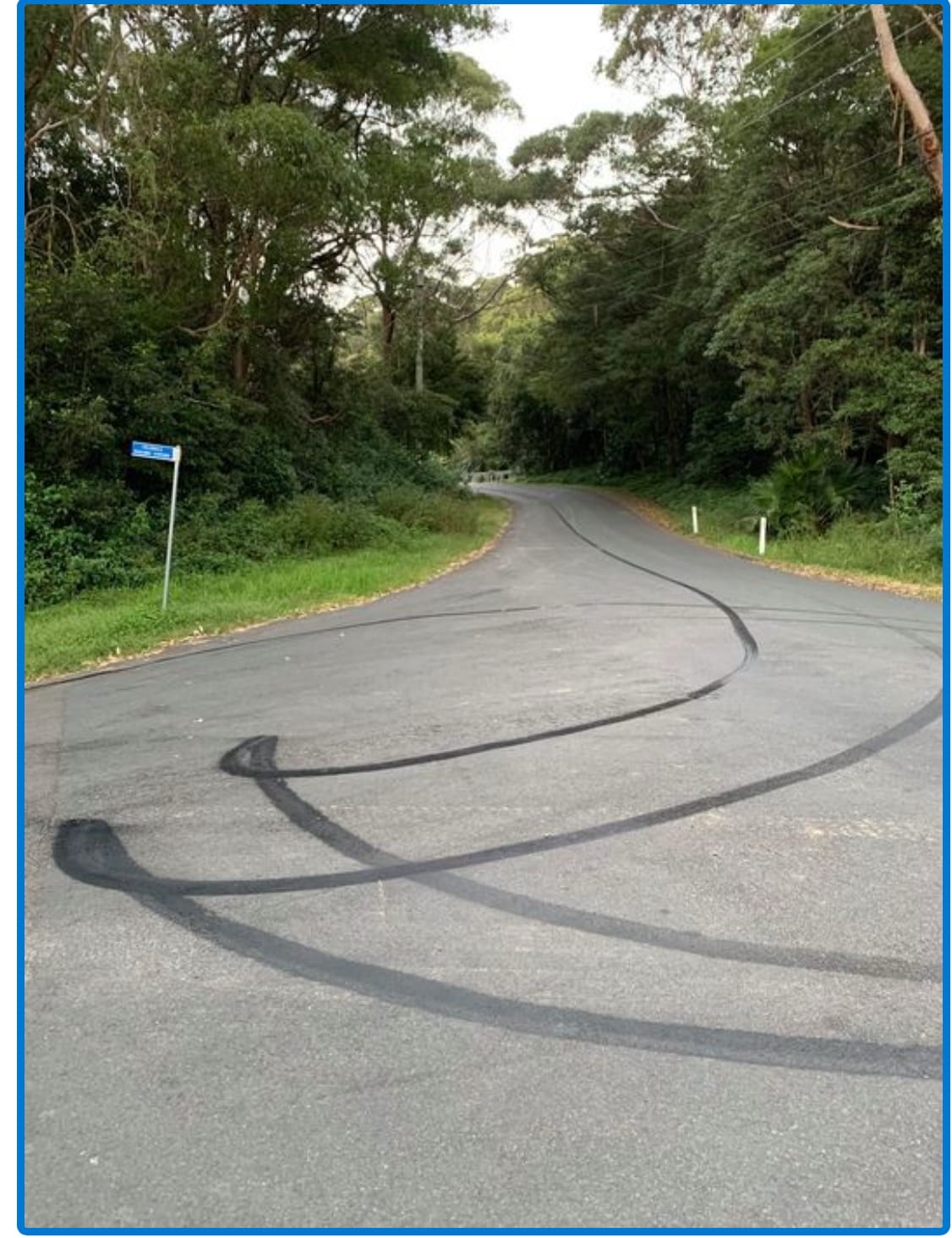
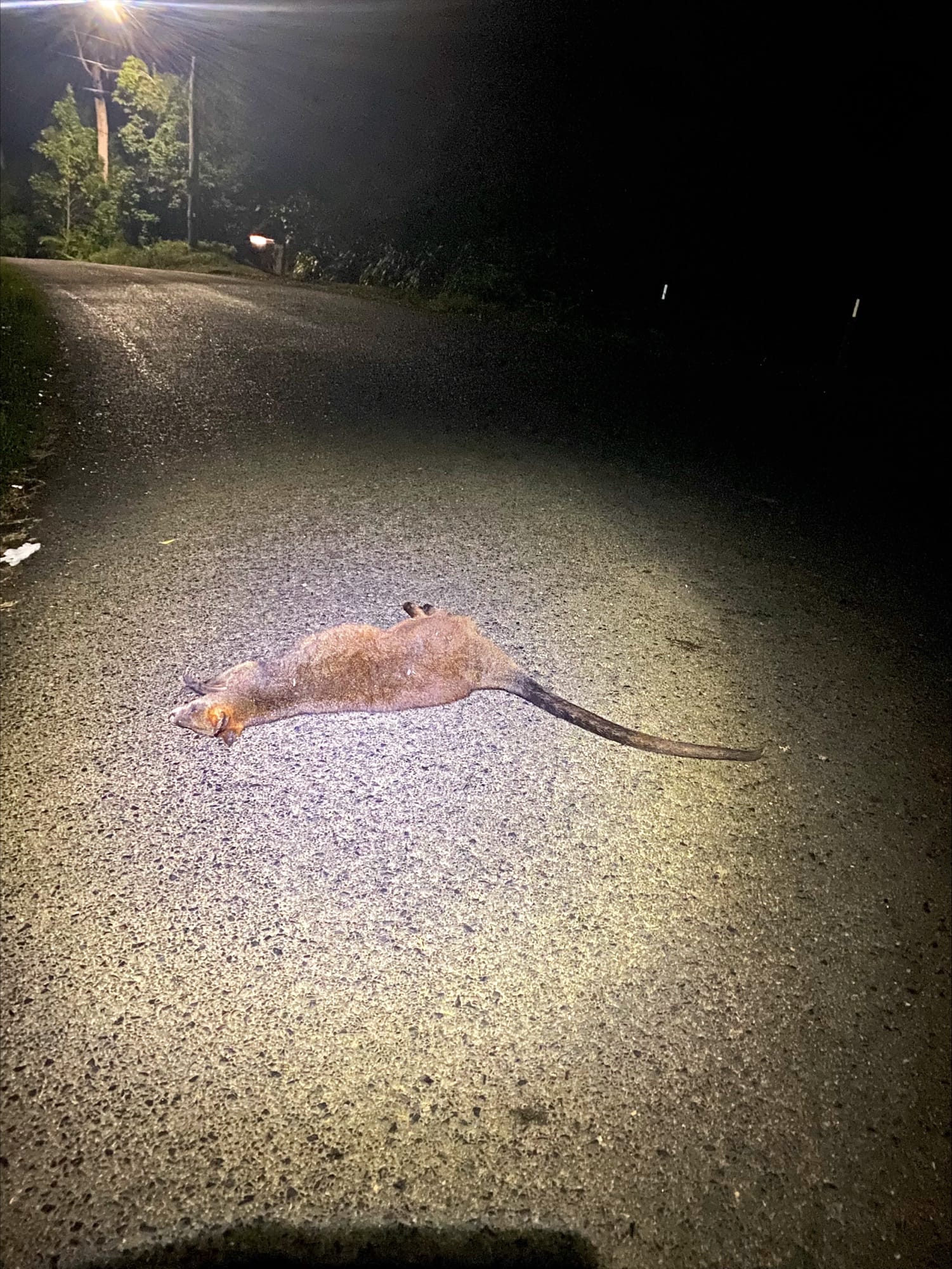
Speeding on the backroads is taking a heavy toll on our wildlife. Photos: Kylie Madden
Residents want speed limit cut
The backroads run from Wombarra to Austinmer, through the foothills of the escarpment, and those who live there fear it’s only a matter of time before a car crashes into cyclists or pedestrians.
A mum of two school-aged children, Bettina would like to see the area made a 30km/h zone, which is the surburban norm in her homeland of Germany.
“The impact and what can go wrong, in a 50km/h crash versus a 30km/h crash, there’s a huge difference,” says Bettina, who supports Bulli local Lena Huda's 30Please campaign to make Australian residential streets safer.
“I feel it would not impact many people in a negative way to reduce the speed on this street – it would just have benefits, and also it wouldn’t be very costly either, to just put a few speed bumps, a few signs.”
In addition to children walking to school or waiting for the bus, Buttenshaw Drive is frequented by joggers and walkers who come from near and far to exercise amid the cool, shady beauty of the backroads. "Nature wise, they get that connection," resident conservationist Josh says. "And it's actually cooler up here because you're in the escarpment."
Long-time local Fiona, who walked with her dog, Evie, to our safe meeting place on Austinmer fire station’s driveway, has been advocating for action for 30 years and is determined to see change in her lifetime. Fiona suggests chicanes, which slow traffic via extra curves and narrower lanes.
“I’d love some type of chicane system, because also, there is a huge water problem up here when it rains,” she says.
Most residents aren’t calling for expensive kerb and guttering – they want traffic-calming measures, such as speed bumps, warning signs or targeted mobile speed cameras in peak times, such as summer weekends.
All agree that reducing the speed limit, preferably from 50km/h to 30km/h, is key.
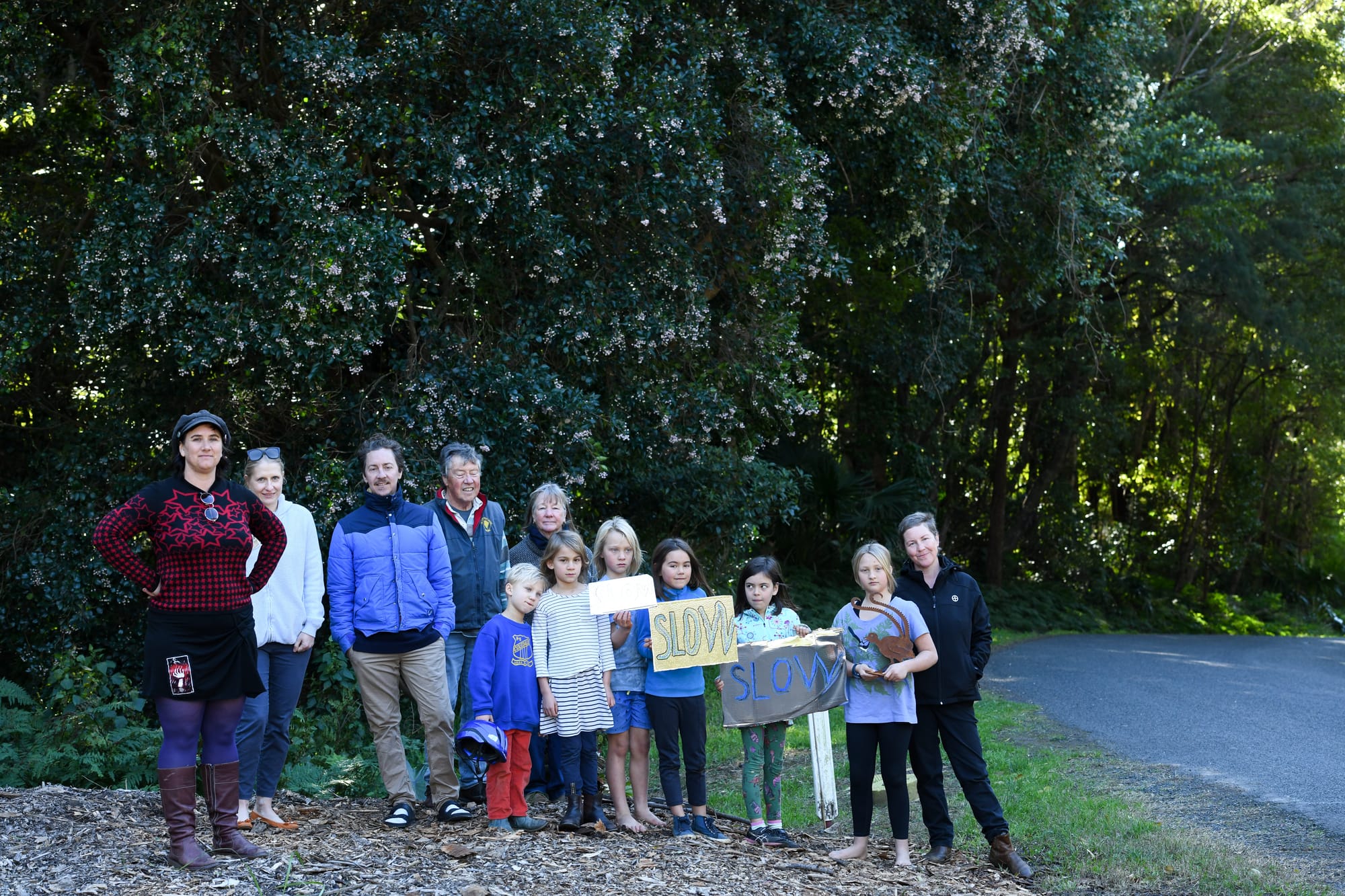
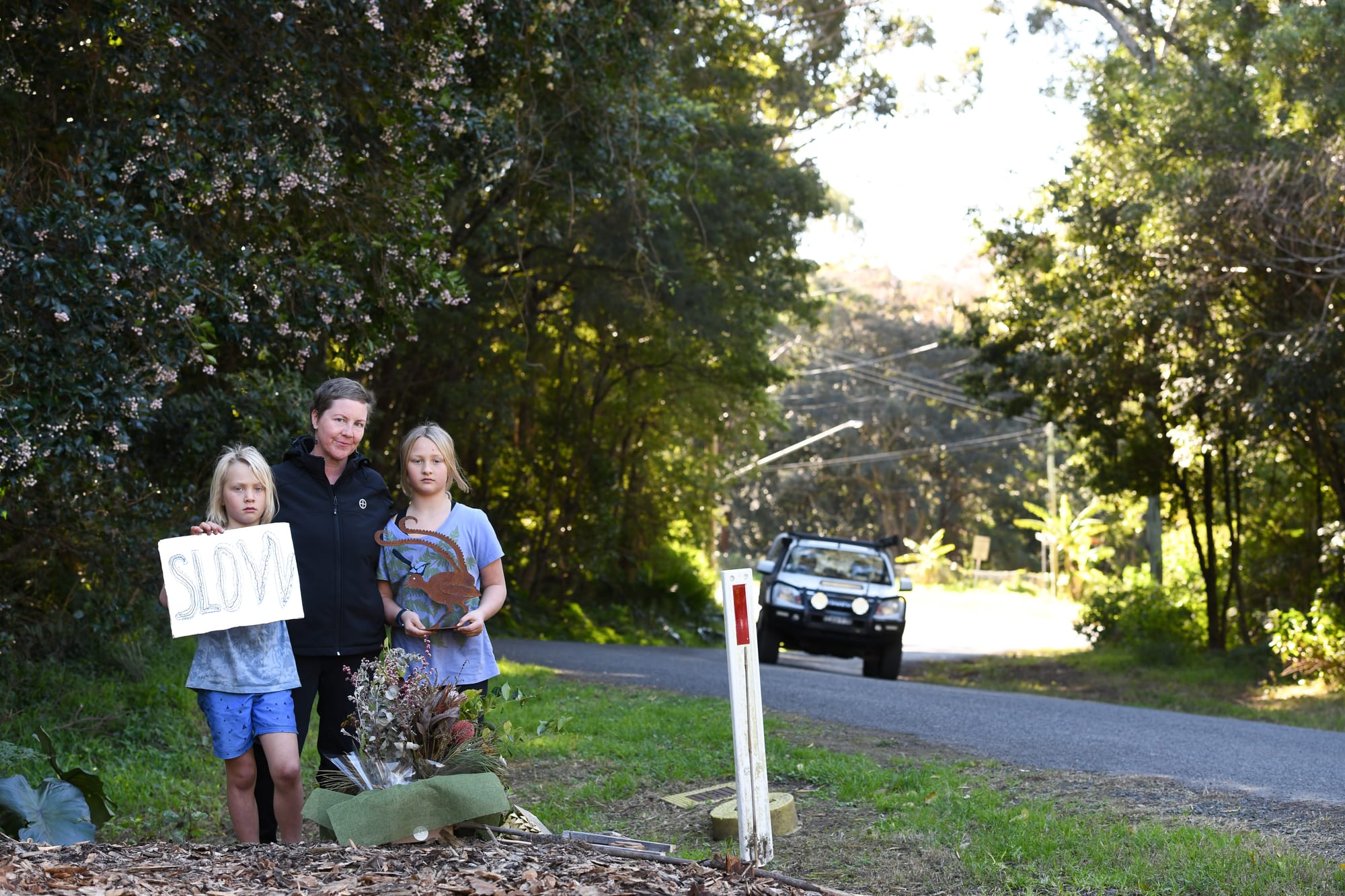
Back in July 2020, then Greens councillor Mithra Cox met the Illawarra Flame and a group of Buttenshaw Drive residents, who were calling for traffic calming measures after the death of Frank the lyrebird. At right: Kylie and her children, Arlo and Millie, are still waiting for traffic calming measures. Photos: Unicorn Studios, July 2020
Counting dead animals
In the meantime, the wildlife death toll mounts daily on the backroads, which lack footpaths or road lines and are instead marked by skid marks, donuts and burnouts. The residents believe Buttenshaw Drive is not only being used as a detour to avoid traffic jams on Lawrence Hargrave Drive but also by drivers wanting to avoid speed cameras or police after they’ve had a few drinks.
“It was not designed for the level of traffic that we have, especially on weekends,” says Kylie, who has recorded 40 species killed by cars over the years.
“One of the saddest roadkill was quite an unusual species – a cave-roosting Eastern Horseshoe Bat. It was a juvenile and maybe not as good a flyer."
Frogs are among the worst hit – just in the patch where residents stand for the Illawarra Flame’s photo are the remains of two Striped Marsh Frogs.
“The backroads from Wombarra to Austi via Morrison, Buttenshaw and Asquith is about 5km," Kylie says. "On a wet night in summer, one to two frogs will be killed every 100m, meaning at least 50 frogs every warm wet night!”
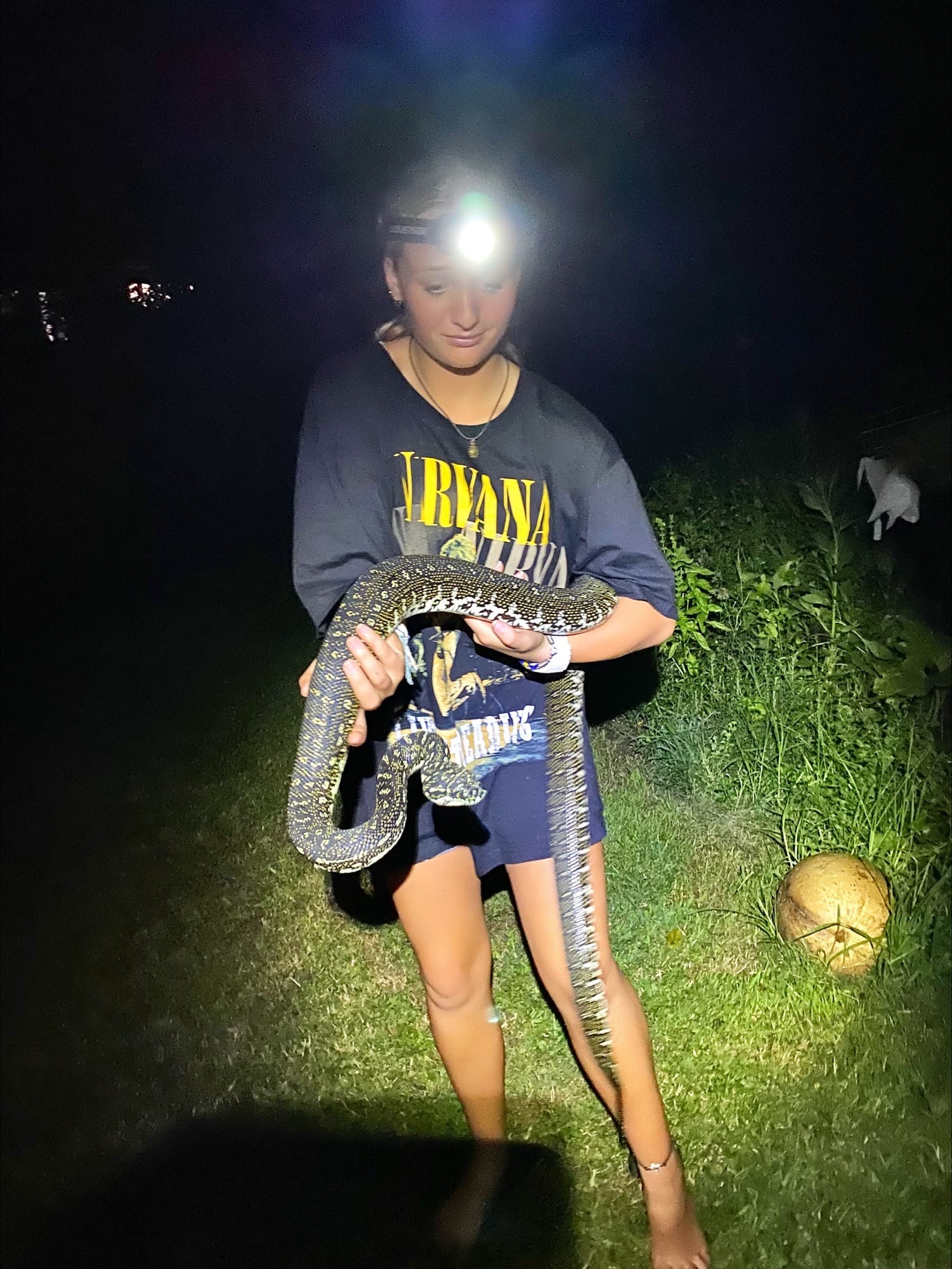
Millie recently saved a python from the road. Photo: Kylie Madden
Take care, pythons crossing
Spring is the peak time for diamond pythons on the move.
“Once there was this huge python on the road," Fiona says. "I couldn’t move him, and I thought, How am I going to protect this snake? So I had to put branches around, so that people would stop."
The pythons migrate from the escarpment towards the coast each spring and are lulled by the warmth of the road into a false sense of security, Kylie explains.
“They’re just being wiped out on this road, like we’re changing the ecology of the place. This is all zoned conservation. We’re restricted in what we can do to our buildings and how much we can subdivide and all of these things. And yet we have this road literally dissecting it from one end to the other…”
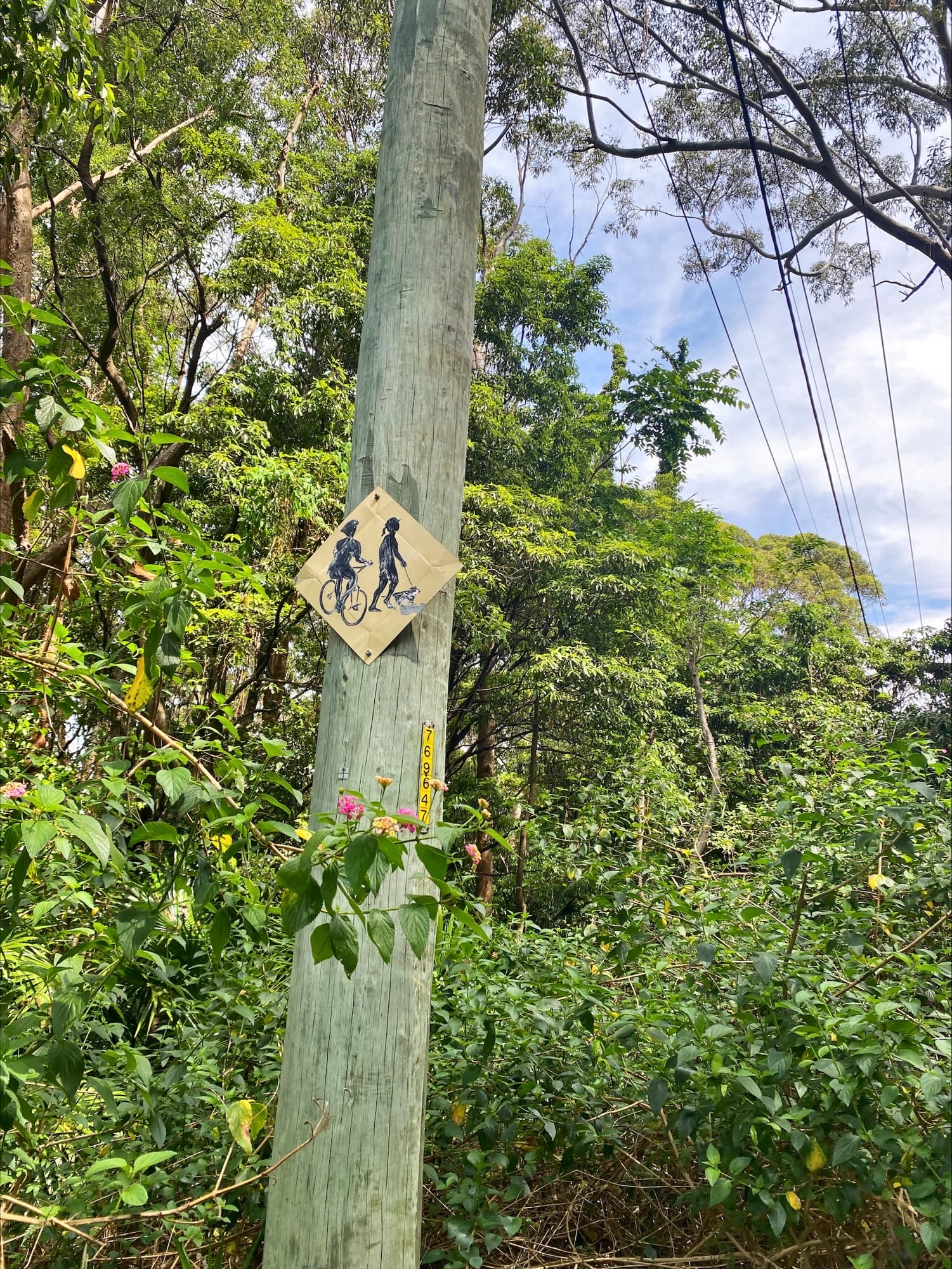
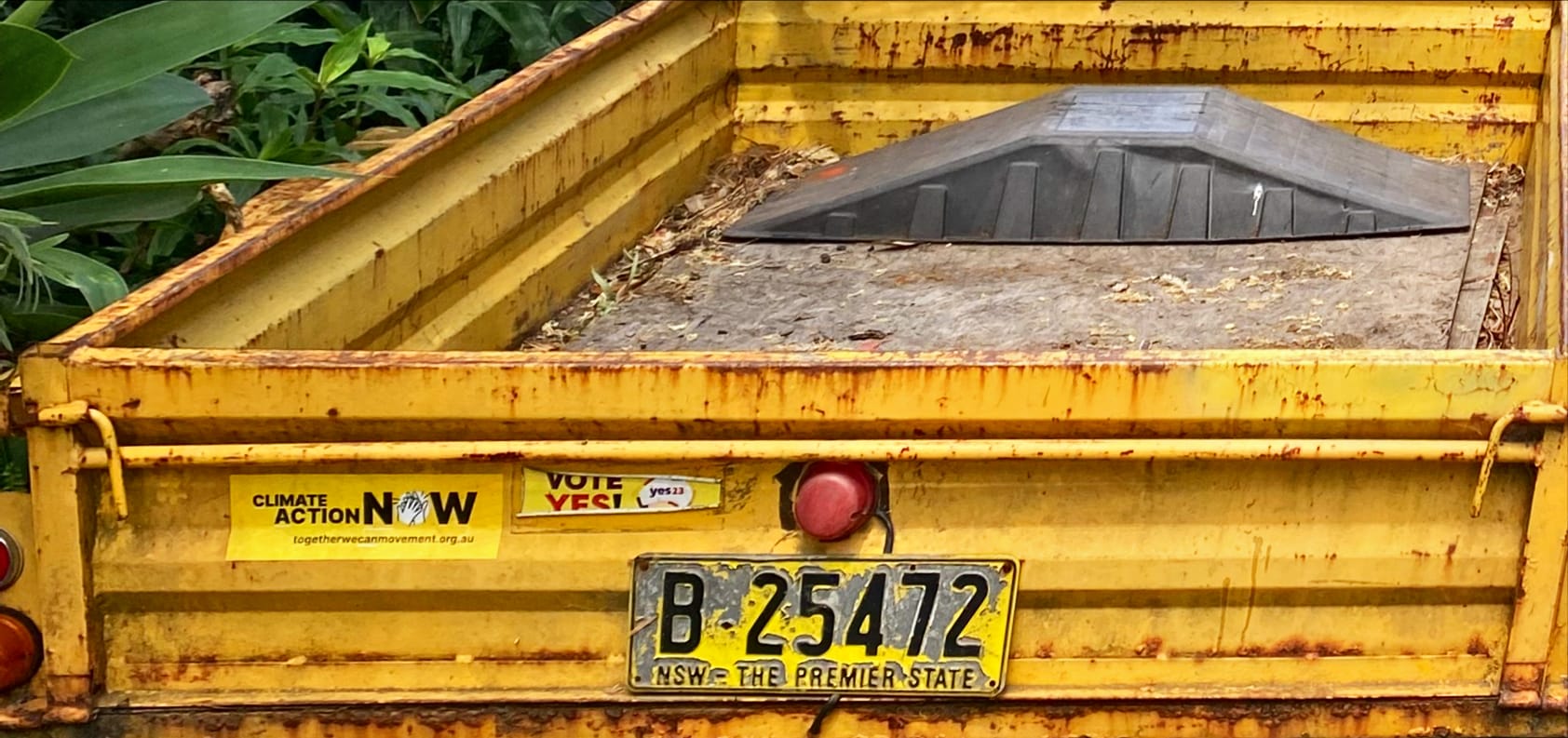
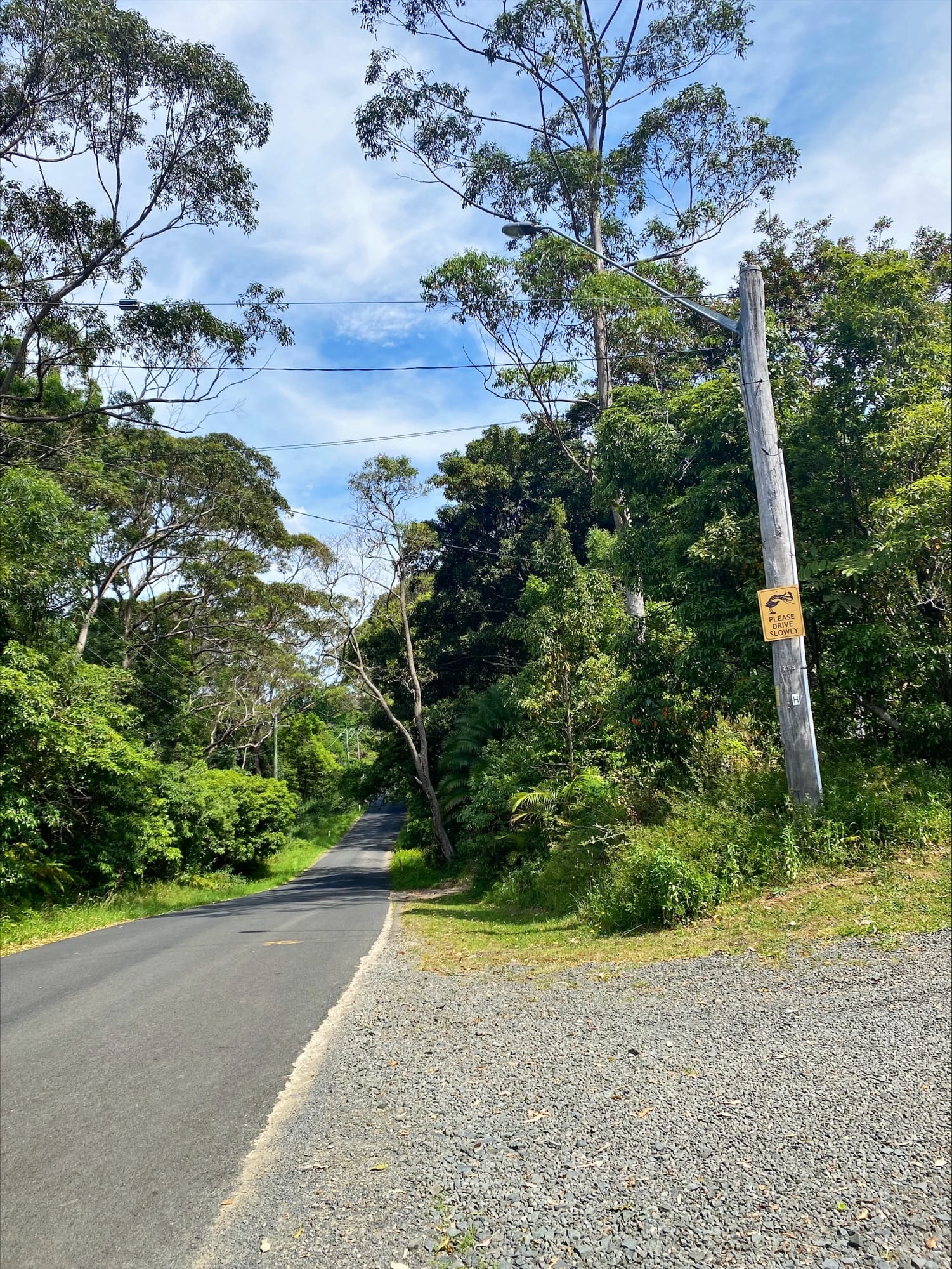
Old warning signs and a strategically placed yellow community trailer used to help slow traffic and highlight hazards. Photos: Kylie Madden
Drivers urged to slow down
Local nicknames for Buttenshaw Drive now include the “river of death” and the “killing zone”. There is one section near a 'Slow' sign, with bush on both sides that is known as “death valley”.
Recently run-over species have included wallabies, possums and a bandicoot. “I had to fish three almost independent babies out of its pouch, which had also all been killed,” Kylie says.
“The water dragons are getting smashed,” Ed adds. “I saw one with eggs everywhere; they explode when the cars hit them.”
He also recently called WIRES to help after a mother possum was killed but her joey survived.
While residents await council action to calm the traffic, Kylie issues a plea to drivers: drive slowly and try to avoid the backroads – stay on the main Lawrence Hargrave Drive, if possible.
And, finally, report vehicle strikes via citizen science platform iNaturalist, as gathering this grim data could help prod the government into action.
“Everyone should use it if you’re into wildlife,” Kylie says.
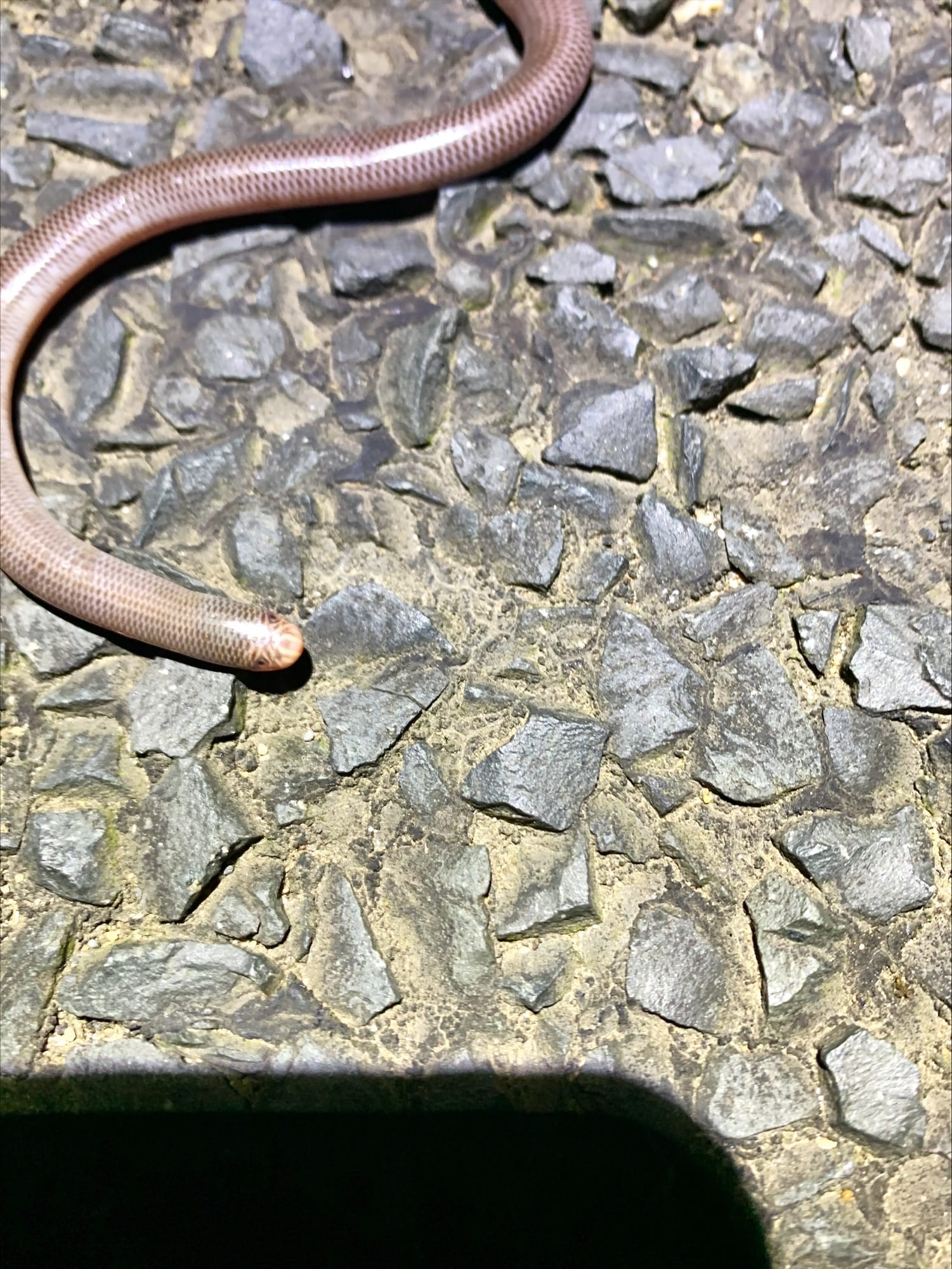
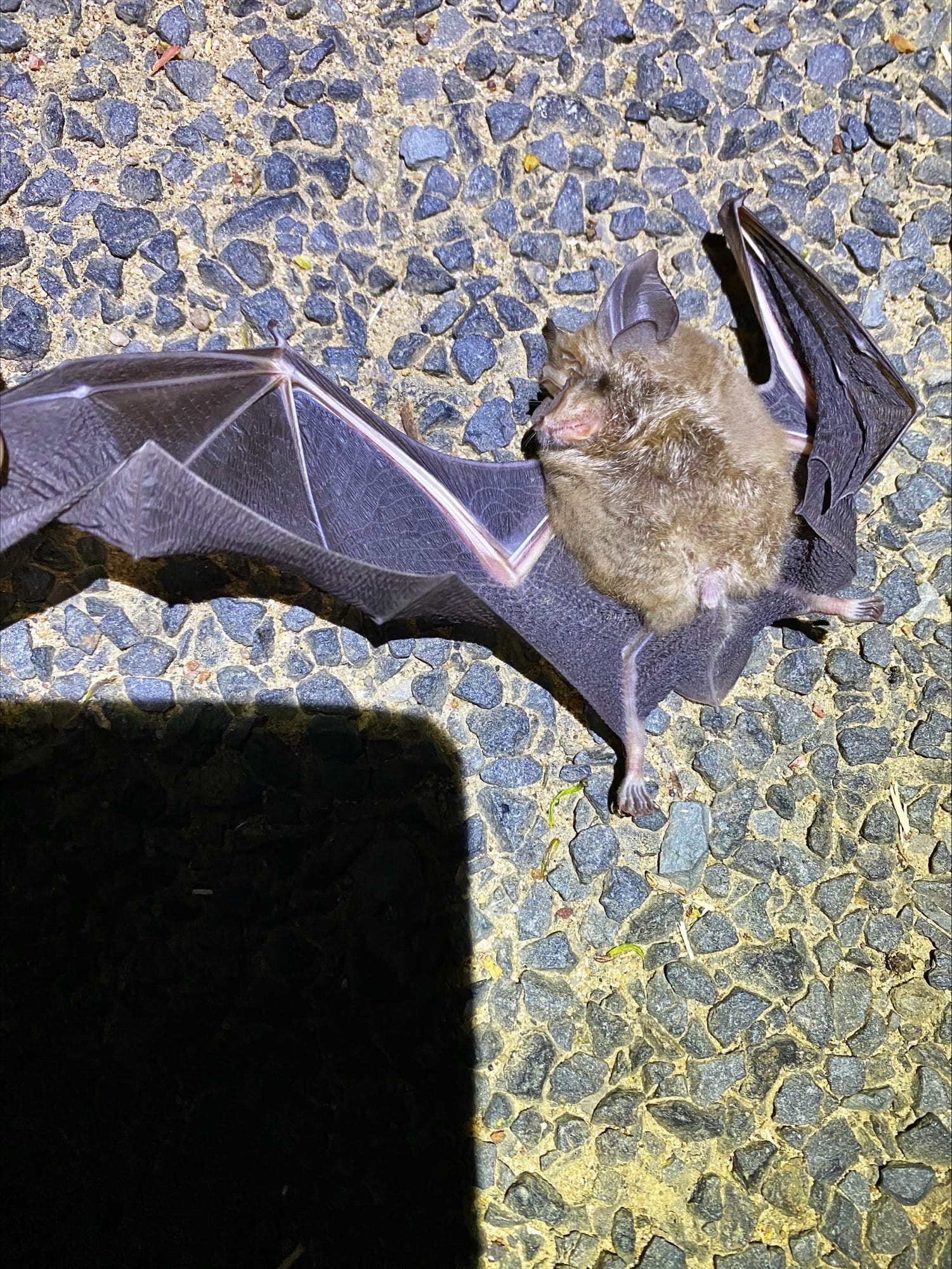
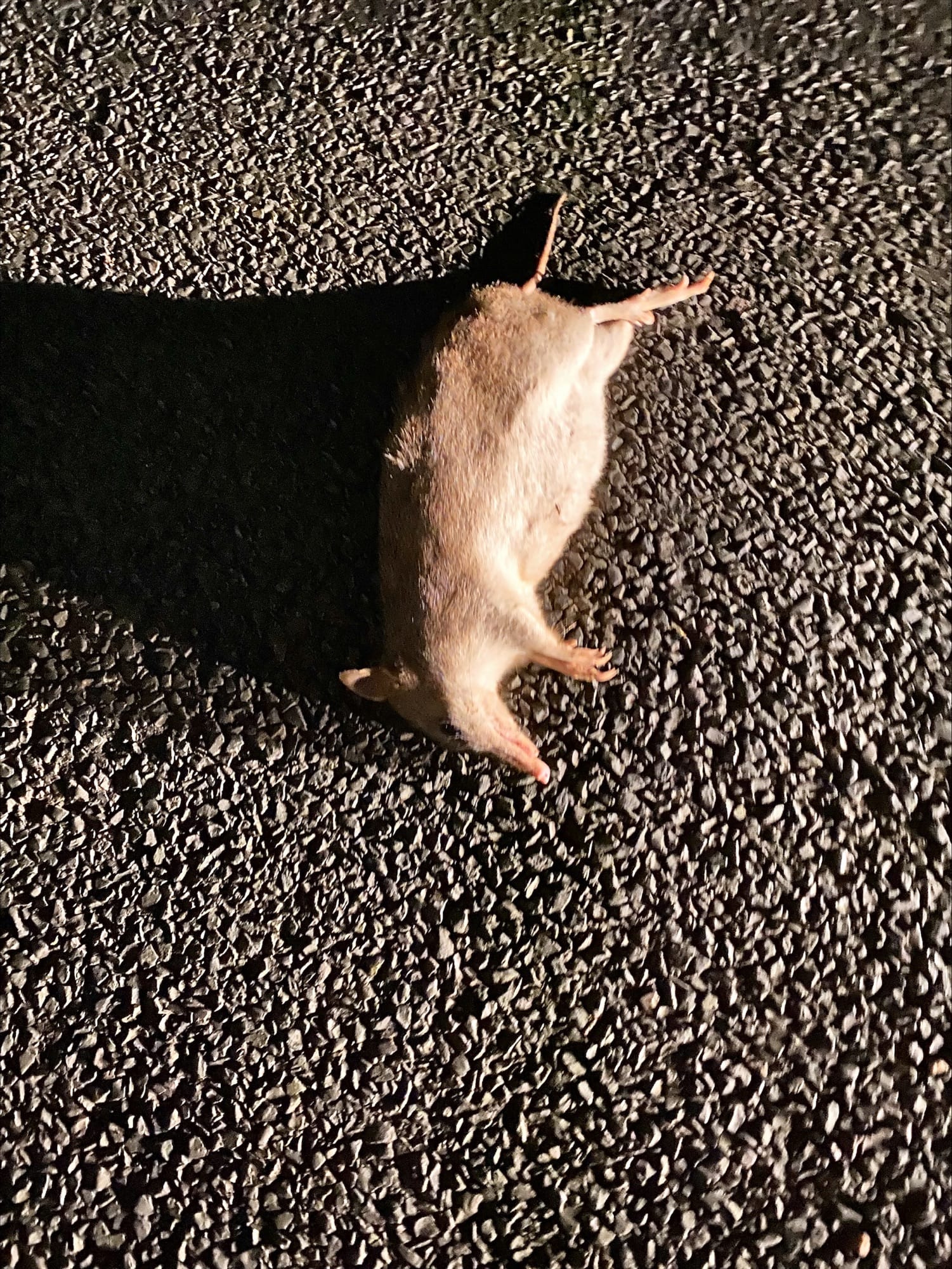
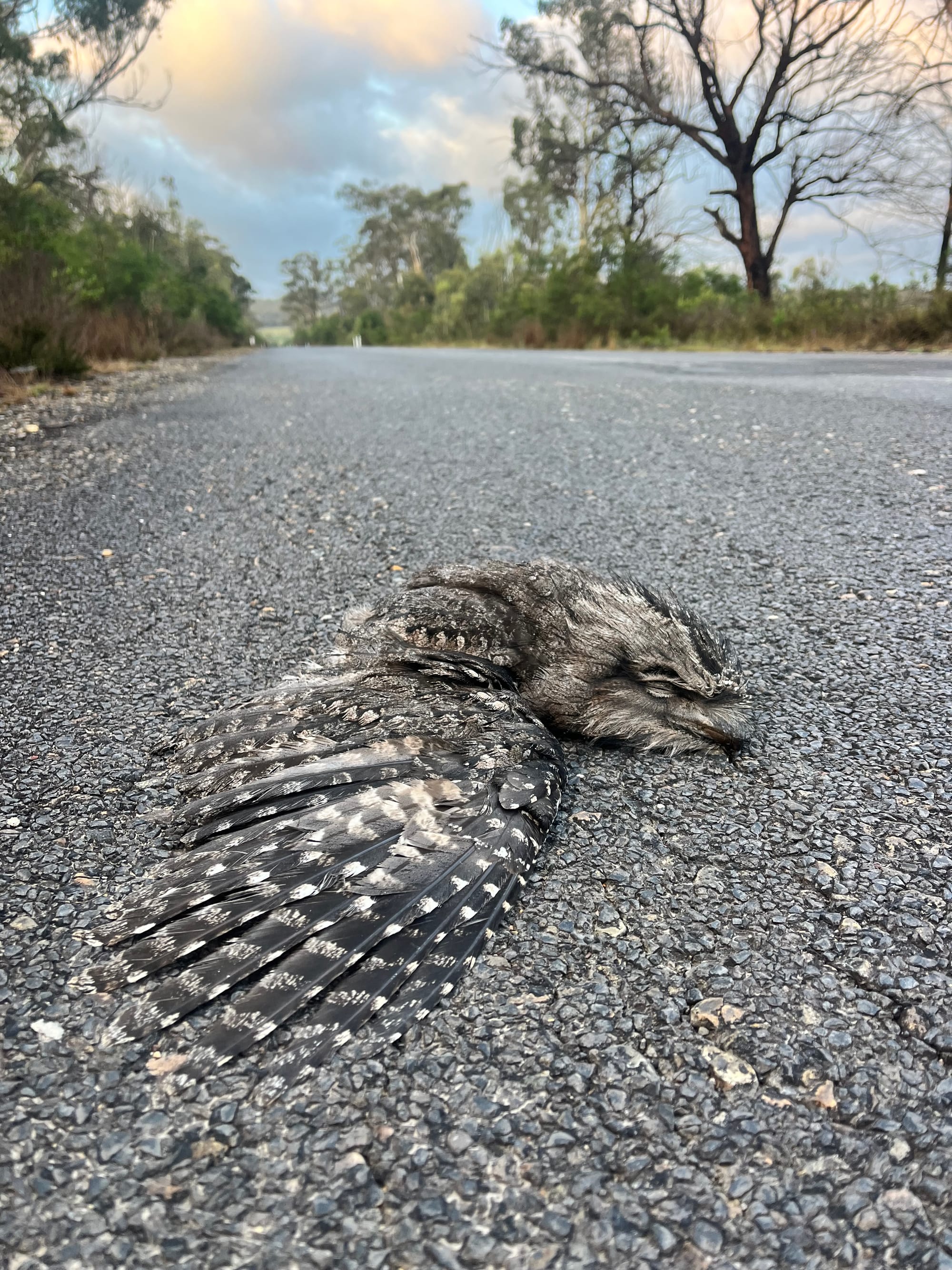
Kylie Madden has counted 40 species killed on the back roads of Wombarra, Coledale and Austinmer. Photos: Kylie Madden and Ed Birt
List of Species Killed on the Backroads
Over the years, the Madden family has compiled a list of 40 species killed by cars on the backroads of Morrison Ave, Buttenshaw Drive, Asquith and Cater streets in the Northern Illawarra – although Kylie admits this number is “definitely an underestimate”.
Mammals (10 species)
Swamp wallaby, Echidna, Sugar glider, Ringtail possum, Brushtail possum, Eastern horseshoe bat, Brown Antechinus, Dusky Antechinus, Long-nosed bandicoot, Rusa Deer.
Birds (15 species)
Superb Lyrebird, Brown cuckoo-dove, Brown Thornbill, Eastern Spinebill, Lewin’s Honeyeater, Rufous Fantail, Eastern yellow Robin, Silvereye, Bassian Thrush, Pied Currawong, Eastern Whipcord, Golden Whistler, Yellow-throated scrub-wren, White-browed scrub-wren, Noisy Miner.
Reptiles (12 species)
Eastern water dragon, Diamond python, Broad-tailed gecko, Blind snake, Eastern small-eyed snake, Golden crowned snake, Red-bellied black snake, Marsh snake, Tiger snake, Garden skink, Yellow-bellied three-toed skink, Water skink.
Frogs (3 species)
Striped marsh frog, Peron's tree frog, Southern green stream frog.
Other
Giant Spiny Crayfish.

